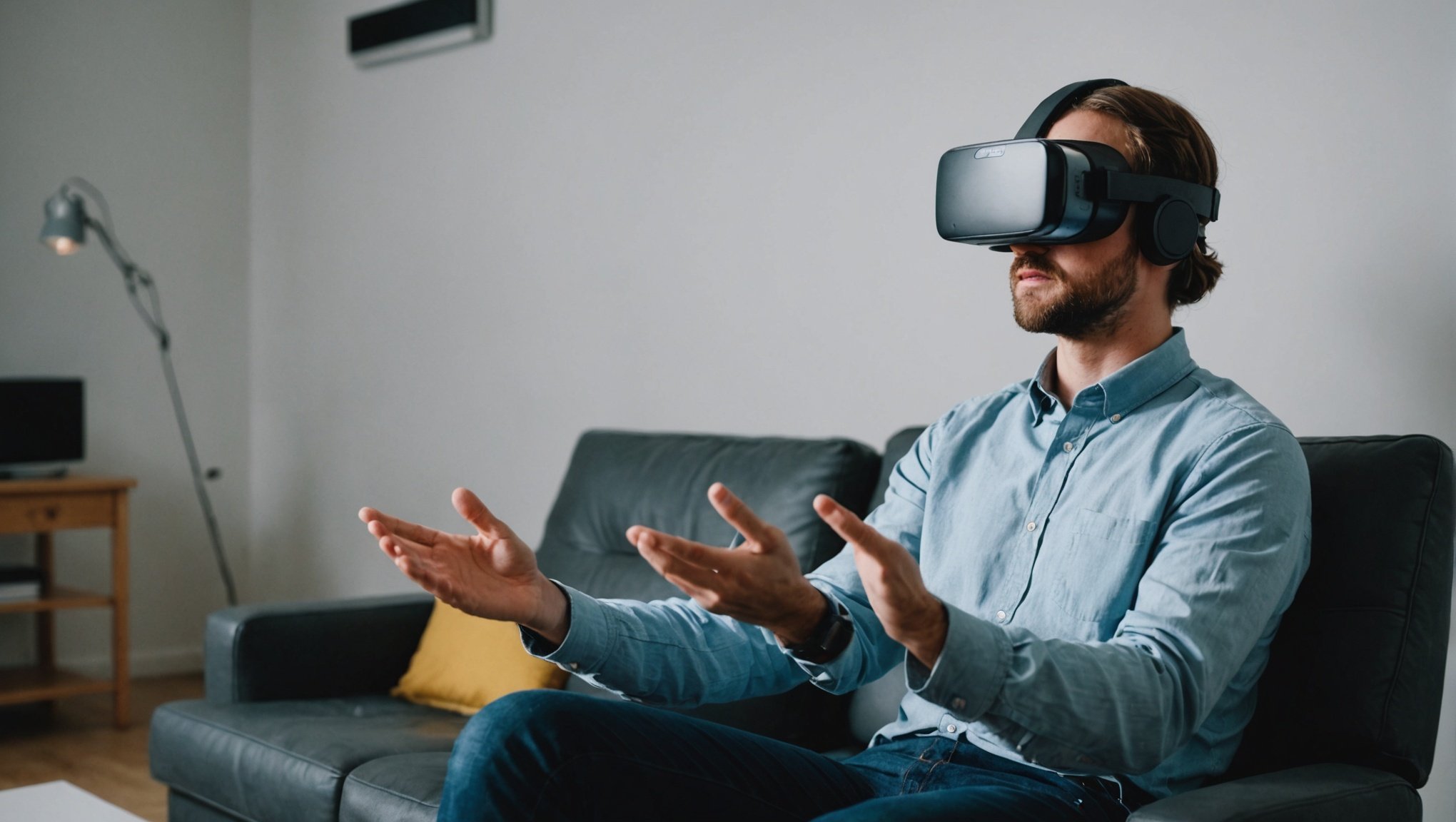Virtual reality therapy is transforming the treatment of phobias, offering an innovative approach that merges technology with psychology. This method allows individuals to confront their fears in controlled, immersive environments, fostering gradual desensitization. By engaging with virtual scenarios—be it heights, spiders, or crowded spaces—patients gain new coping strategies and insights, leading to profound personal breakthroughs. Explore how this powerful tool offers hope and healing, shifting the dynamics of phobia treatment.
Overview of Virtual Reality Therapy
Virtual Reality Therapy (VR Therapy) is an innovative approach that uses immersive technology to treat various psychological issues, including phobias. This method has evolved significantly since its inception in the 1990s, when it was primarily used for exposure therapy. VR Therapy Overview highlights its effectiveness in creating controlled environments where patients can confront their fears safely.
This might interest you : Unlocking the Paleo Diet: A Comprehensive Guide to Alleviating Hashimoto”s Thyroiditis Symptoms
Incorporating VR technology into therapeutic practices involves using headsets and software that simulate real-world scenarios. This integration allows therapists to tailor experiences to individual needs, providing a more personalised treatment. For instance, a person with a fear of heights might be gradually exposed to increasing heights through a virtual environment, allowing them to build tolerance and reduce anxiety over time.
The therapeutic process using VR for phobia treatment typically begins with an assessment to identify specific fears and triggers. Once these are established, the patient engages in a series of VR sessions designed to expose them to their phobia incrementally. This gradual exposure is crucial in helping individuals manage their reactions and develop coping strategies. The controlled nature of VR environments ensures that patients can face their fears without real-world consequences, making it a safe and effective treatment option.
In parallel : Navigating anxiety disorders: understanding and overcoming fear
Mechanisms of Action in VR Therapy
Understanding the mechanisms of VR therapy is vital to appreciating its effectiveness. At its core, exposure therapy is a foundational principle. In VR, this involves gradually exposing patients to their fears in a simulated environment. This method allows individuals to confront anxiety-inducing scenarios without the risks associated with real-world exposure.
How VR Creates Controlled Environments
VR technology creates controlled environments that are pivotal for safe exposure. By adjusting the intensity and nature of the scenarios, therapists can customise the experience to suit each patient's needs. This personalised approach ensures that patients can face their fears at a manageable pace, facilitating gradual desensitisation.
Role of Cognitive Behavioral Therapy
Cognitive Behavioral Therapy (CBT) plays a crucial role in enhancing VR treatment. It focuses on altering negative thought patterns and behaviours. When integrated with VR, CBT provides a comprehensive treatment framework. Patients not only face their fears but also learn coping strategies to manage their anxiety. This combination of VR and CBT results in a more robust therapeutic process, empowering patients to achieve long-lasting improvements in their mental health.
Effectiveness of VR Therapy for Phobias
The effectiveness of VR therapy in treating phobias has been supported by numerous research studies. These studies consistently highlight the positive treatment outcomes achieved through VR therapy. For instance, a study conducted by Emmelkamp et al. demonstrated that VR therapy significantly reduced anxiety levels in patients with acrophobia compared to traditional methods. The controlled nature of VR environments allows for precise exposure to phobic stimuli, leading to more effective desensitisation.
Key Research Findings
Several key studies have shown that VR therapy is just as effective, if not more so, than conventional exposure therapy. A meta-analysis by Opris et al. found that VR exposure therapy had a higher success rate in reducing phobic symptoms than traditional methods. This is largely due to the ability of VR to create highly immersive and customisable scenarios, which enhance the therapeutic process.
Patient Experiences and Expert Opinions
Patient testimonials further underscore the success of VR therapy. Many report feeling more comfortable confronting their fears in a virtual setting. Experts in the field, such as Dr. Albert Rizzo, advocate for VR therapy, citing its ability to provide safe, repeatable, and controlled exposure. This innovative approach continues to gain traction as a preferred method for phobia treatment.
Specific Phobias Treated by VR Therapy
Virtual Reality (VR) therapy has become a powerful tool for addressing a variety of specific phobias. Its capacity to create immersive environments allows for targeted treatment of common fears, such as fear of heights and arachnophobia (fear of spiders).
Common Phobias Addressed
Among the most frequently treated phobias are acrophobia and arachnophobia. VR therapy provides a safe space for patients to confront these fears through customised scenarios. For instance, individuals with acrophobia are gradually exposed to virtual heights, enabling them to manage their anxiety in a controlled setting.
Unique Approaches in VR Therapy
Each phobia requires a unique approach within VR therapy. For arachnophobia, the virtual environment might simulate encounters with spiders, starting with less intimidating visuals and gradually increasing the level of exposure. This tailored approach ensures that treatment aligns with the patient's comfort level, promoting effective desensitisation.
Case Studies and Outcomes
Case studies highlight the successful treatment outcomes achieved through VR therapy. Patients often report a significant reduction in anxiety levels and improved coping mechanisms. These positive results underscore the efficacy of VR applications in treating specific phobias, making it a preferred choice for many seeking relief from their fears.
Expert Opinions on VR Therapy
Insights from mental health professionals reveal the transformative potential of VR therapy in treating phobias. Experts like Dr. Albert Rizzo emphasise its ability to provide immersive, controlled environments that enhance traditional therapeutic methods. Interviews with specialists highlight the growing acceptance of VR therapy as a mainstream treatment option.
Future of VR Therapy in Mental Health
Many professionals predict a significant expansion of VR therapy applications. As technology advances, VR therapy is expected to address a broader range of mental health conditions beyond phobias. This evolution presents opportunities for more personalised and effective treatments, reshaping the landscape of mental health care.
Ethical Considerations and Best Practices
Implementing VR therapy involves addressing ethical concerns. Experts stress the importance of ensuring patient consent and privacy in virtual settings. Best practices include thorough training for therapists and adherence to established guidelines to maintain patient safety and treatment efficacy. As VR therapy becomes more prevalent, ongoing dialogue among mental health professionals is crucial to navigate ethical challenges and optimise therapeutic outcomes.
Resources and Further Learning
For those interested in expanding their knowledge of VR Therapy, a wealth of resources and learning materials is available. These can enhance your understanding of clinical practices and the latest advancements in the field.
Recommended Readings and Research Articles
- "Virtual Reality Therapy: Principles and Practice" by Dr. Albert Rizzo offers an in-depth exploration of VR therapy techniques.
- The Journal of CyberPsychology and Behavior frequently publishes research articles highlighting the efficacy of VR in therapeutic settings.
- A meta-analysis by Opris et al. provides comprehensive insights into the success rates of VR therapy compared to traditional methods.
Organizations and Clinics
Several organisations are at the forefront of VR therapy:
- The Virtual Reality Medical Center offers cutting-edge VR therapy services.
- MindMaze is renowned for its innovative use of VR in clinical practices.
- VRHealth provides VR-based solutions tailored to individual therapeutic needs.
Online Courses and Workshops
Professionals can enhance their skills through online courses:
- Coursera offers a course titled "Virtual Reality in Healthcare" that covers the integration of VR in therapy.
- The American Psychological Association periodically hosts workshops on VR therapy techniques, providing hands-on experience and practical knowledge.











